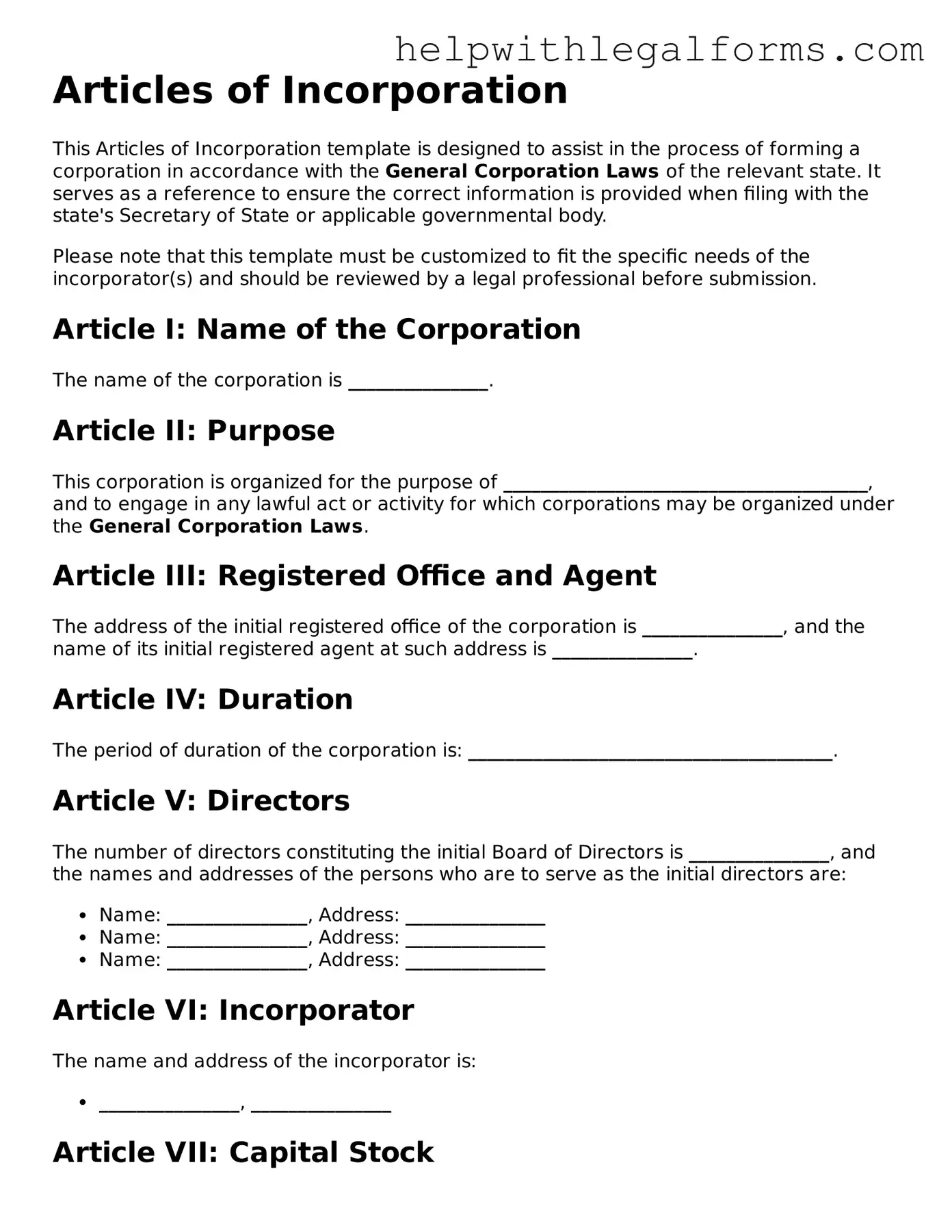What are the Articles of Incorporation?
The Articles of Incorporation is a document that is essential for forming a corporation. It serves as a formal application to the government to recognize a business as a corporation. By filing this document, the business owners provide necessary information about the corporation, such as its name, purpose, the number of shares it is authorized to issue, and the details of the incorporator(s).
Why do I need to file the Articles of Incorporation?
Filing the Articles of Incorporation is a legal requirement for establishing a corporation in the United States. This process officially registers your business as a corporation with the state, providing benefits such as personal liability protection for the owners, potential tax advantages, and greater credibility with customers and suppliers.
Where do I file the Articles of Incorporation?
The Articles of Incorporation are filed with the Secretary of State or an equivalent state agency that handles business filings in the state where you plan to incorporate your business. Each state has its own filing requirements and fees, so it's important to consult the specific agency's website or contact them directly for guidance.
Can anyone file the Articles of Incorporation?
The ability to file the Articles of Incorporation typically rests with the incorporator(s) who may be one or more individuals, or an entity. The incorporator(s) is responsible for signing the Articles and ensuring they are correctly filed with the appropriate state agency. After the corporation is formed, the incorporator's role usually ends, and control of the corporation is handed over to the board of directors.
What information is required in the Articles of Incorporation?
While the specific requirements can vary by state, most Articles of Incorporation will include the corporation's name, its purpose, the corporation's principal place of business, the number of shares the corporation is authorized to issue, the name and address of the incorporator(s), and the name and address of the registered agent who will receive legal documents on behalf of the corporation.
How much does it cost to file the Articles of Incorporation?
The filing fee for the Articles of Incorporation varies from state to state. Costs can range from as little as $50 to several hundred dollars. It's advisable to check with the specific state agency where you plan to file for the exact fee structure. Additionally, expedited services may be available for an additional charge if you need your corporation to be established more quickly.
How long does it take for the Articles of Incorporation to be approved?
The processing time for the Articles of Incorporation can differ greatly depending on the state. Some states may process your filing in a matter of days, especially if you pay for expedited service, while other states may take several weeks under standard processing times. It's important to plan accordingly and check with the state agency for an estimated timeline.
What happens after the Articles of Incorporation are filed?
Once the Articles of Incorporation are filed and approved, the state will issue a certificate of incorporation or a similar document, confirming the corporation's legal existence. After this, the newly formed corporation must comply with other state requirements such as holding an organizational meeting, issuing stock certificates, and obtaining any necessary business licenses and permits.
Is it necessary to hire a lawyer to file the Articles of Incorporation?
While it's not a legal requirement to hire a lawyer to file the Articles of Incorporation, consulting with one can be very helpful, especially if your corporation will have a complex ownership structure or you're unfamiliar with state laws. A lawyer can provide valuable advice and ensure that your documents are filed correctly and efficiently.
Can the Articles of Incorporation be changed after they are filed?
Yes, the Articles of Incorporation can be amended after they are filed. To make changes, the corporation must file an Articles of Amendment with the same state agency where the original Articles were filed. This process is used to update information such as the corporation's name, its purpose, or the number of authorized shares. Like the original filing, this process involves a filing fee and must be approved by the state.
